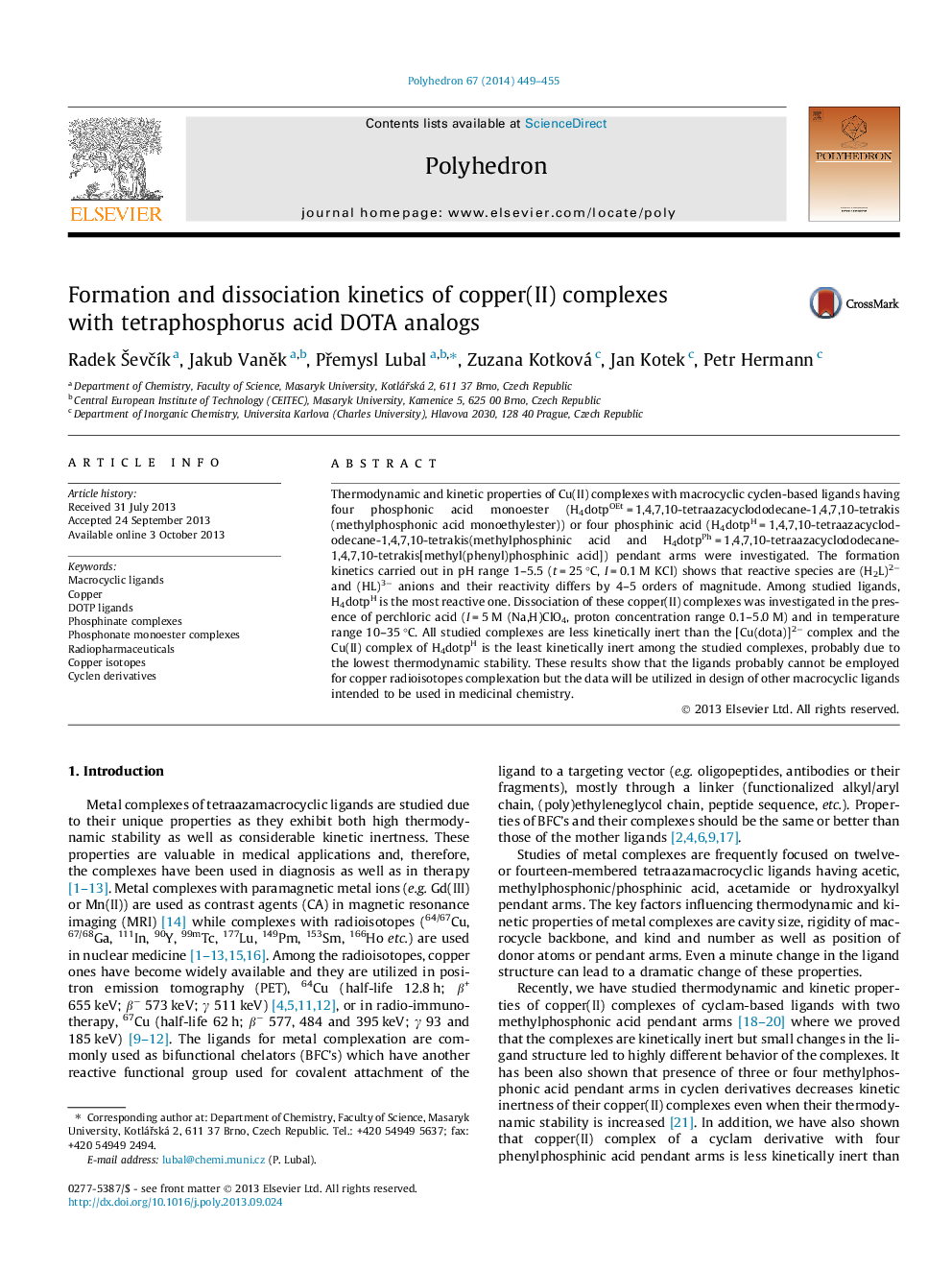| کد مقاله | کد نشریه | سال انتشار | مقاله انگلیسی | نسخه تمام متن |
|---|---|---|---|---|
| 1335502 | 1500272 | 2014 | 7 صفحه PDF | دانلود رایگان |

Thermodynamic and kinetic properties of Cu(II) complexes with macrocyclic cyclen-based ligands having four phosphonic acid monoester (H4dotpOEt = 1,4,7,10-tetraazacyclododecane-1,4,7,10-tetrakis(methylphosphonic acid monoethylester)) or four phosphinic acid (H4dotpH = 1,4,7,10-tetraazacyclododecane-1,4,7,10-tetrakis(methylphosphinic acid and H4dotpPh = 1,4,7,10-tetraazacyclododecane-1,4,7,10-tetrakis[methyl(phenyl)phosphinic acid]) pendant arms were investigated. The formation kinetics carried out in pH range 1–5.5 (t = 25 °C, I = 0.1 M KCl) shows that reactive species are (H2L)2− and (HL)3− anions and their reactivity differs by 4–5 orders of magnitude. Among studied ligands, H4dotpH is the most reactive one. Dissociation of these copper(II) complexes was investigated in the presence of perchloric acid (I = 5 M (Na,H)ClO4, proton concentration range 0.1–5.0 M) and in temperature range 10–35 °C. All studied complexes are less kinetically inert than the [Cu(dota)]2− complex and the Cu(II) complex of H4dotpH is the least kinetically inert among the studied complexes, probably due to the lowest thermodynamic stability. These results show that the ligands probably cannot be employed for copper radioisotopes complexation but the data will be utilized in design of other macrocyclic ligands intended to be used in medicinal chemistry.
The copper(II) complexes with cyclen-based ligands having four phosphorus-acid pendant arms following the impact of derivatization on the complex formation/dissociation were studied. These metal complexes are less kinetically inert than the [Cu(dota)]2– complex.Figure optionsDownload as PowerPoint slide
Journal: Polyhedron - Volume 67, 8 January 2014, Pages 449–455